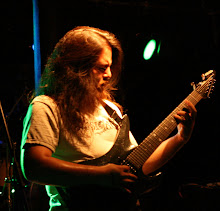There of course is lots of contention over this topic. But more and more I read there is definitely a pecking order with limitations on cost, size, and available values. In repairs I use whatever I have on hand or can find. And to be honest, it works just fine. But for the super discerning ear, here is the pecking order or dielectrics:
- Polystyrene
- Polycarbonate
- Polypropylene
- Mylar/Polyethylene
- Polyester
- Ceramic non-polarized preferred
- Tantalums for Polarized
- Electrolytics
Of course there are people that prefer nice (NPO/C0G) ceramics over any of the others. Also remember that vintage equipment used the cheapest stuff they could find, which hazed the sound. Our ears tend to like distortion. It sounds "better" and warmer and louder. Like records or tubes.
Pretty much universally Electrolytics should be avoided like the plague. But reality is that there are certain values you need them. For audio path stuff, non-polarized is better than polarized. Also try to get low-ESR, which typically means the smallest voltage you can use in the circuit.
Polarized ones are great for power supplies and necessary if you are doing phantom power blocking. In which case it is pretty much universal to prefer Nichicon (HE), Panasonic (FM, FC for small values), Vishay, and Wilma for audio. For power supplies, the universal rule is that they last only 20 years. But I have had no problems with any of the more commonly available brands like Illinois, Xicon, Kemet, etc.
If you have to have a capacitor in the audio path, it is a very common practice to "bypass" them with .1uF film capacitors to let more high's through. Essentially minimizing the effects of the inherent high ESR of Electrolytic capacitors.


No comments:
Post a Comment